Herbs have over the years been used for their unique medicinal purposes. However, most herbs are now a common ingredient in the kitchen. Fresh herbs are part of your go-to arsenal for cooking at home whether you’re looking to add a specific flavor to your food or to change the aroma.
Additionally, most herbs grow well in pots and can be grown on your patio or balcony. Herbs require well-drained soil and a sunny position and don’t require a specific garden for them to grow.
Our detailed guide covers some of the common types of herbs and their uses.
Table of Contents
A Guide to Herbs
Herbs are categorized into two categories: culinary herbs and medicinal herbs.
Culinary herbs have edible parts that are used to add aromatic flavor in different recipes. Most can be used as dried or fresh during the growing season.
Medicinal herbs are tested to see how they work with other herbs, foods, medicines, or supplements.
12 Types of Culinary Herbs.
Some of the popular culinary herbs include:
1. Basil

Basil is one of the most versatile herbs found in Mediterranean dishes that have tomatoes. It needs warmth to grow and the seeds are simple to handle. The herb has anti-inflammatory and antibacterial properties. It’s also rich in vitamins C, K, and A.
Although freshly picked basil adds fragrance to the dish, dried basil leaves contribute to the flavor.
Types of Basil
- Holy Basil-It’s grown in Indian homes and used for its medicinal qualities.
- Sweet Basil-It’s a common variant used in Italian cuisine and most tomato-based dishes.
- Thai Basil-This type has a mint-like flavor and has green leaves with a purple stem.
- Lemon Basil-It’s common in Africa and Asia, and mostly used in Thai cuisine.
You can grow basil in pots in kitchen windows, a conservatory, or in the greenhouse. They need to be spaced in a 5-inch pot. Basil can be grown outside in a sunny sheltered place until late summer.
The leaves are harvested for use in cooking. Pick and remove the flowers to keep the plant growing producing leaves. Sow additional seeds throughout summer and transfer some indoors in early autumn to prolong a fresh supply.
Basil can be used to make pesto and can also be added to salads and soups. The herb also does well in any tomato-based dish for that spicy flavor. You can also pair it with sugar and lemon in a sorbet.
2. Parsley
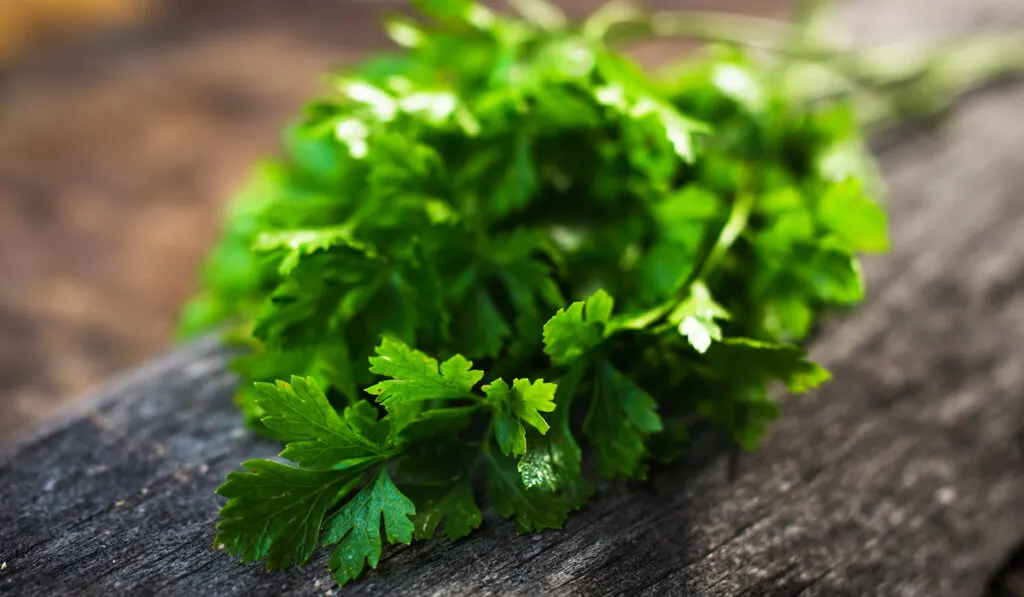
Parsely has dark green leaves with stubby stems. The aromatic herb is mostly sprinkled over dishes before serving to add flavor.
Dried parsley has little to no fragrance, so most people use fresh parsley to add flavor and aroma to any dish. Common parsley dishes include parsley pesto, mashed parsley potatoes, and meat/vegetable soup with parsley garnishing.
Types of Parsely
- Italian Parsely– A flavorful variant used in cooking. It retains its flavor throughout the process.
- Curly Leaf Parsely– It’s a common garnishing ingredient for salads and soups. However, it’s bitter and less fragrant.
Parsley is a good source of vitamin C and aids in digestion. It also improves the delayed menstrual cycle and can be used as a mouth freshener.
3. Rosemary
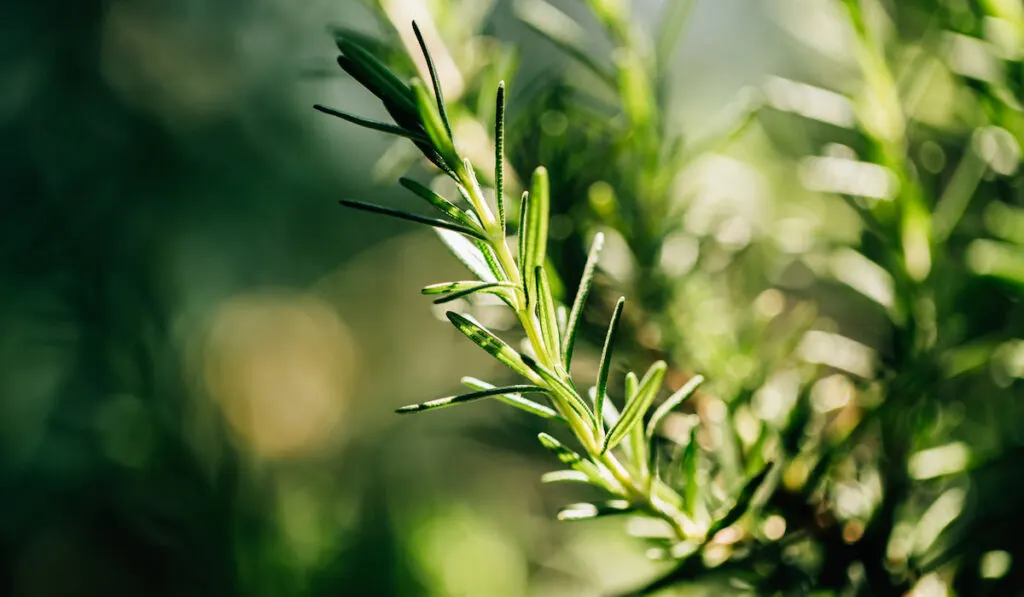
Rosemary is a Latin word that means ‘dew of the sea.’ This popular herb requires little attention and can last for years. All you need is a large pot placed in the sun.
The fragrant, woody herb is used in most dishes for dressing or stuffing. It’s also a favorite flavoring agent for meat and soup dishes. You’ll find it in vegetable platters, beef/lamb dishes, and salads.
Popular rosemary dishes include rosemary chicken with potatoes, rosemary lamb shanks, and rosemary shortbread.
Rosemary also has other health benefits. It’s used as a mood elevator and a remedy for migraines. The herb is popular for its anti-bacterial and anti-oxidant properties, which help in building immunity and curing minor infections.
4. Mint

Mint is a lush green and flavorful herb common in most kitchen gardens and grocery stores. Its long shelf life makes it easy to store for months.
Growing mint isn’t difficult. You can grow it from seed, but most people prefer getting the plant after it’s grown. It’s also best to grow mint in a big container as it tends to run and spread fast.
The fresh herb contains menthol, which gives mint its unique flavor and aroma. Its versatility allows cooks to use the herb in desserts, appetizers, main courses, and beverages.
You can also add mint to your tea, lemonades, soups, salads, and other things. Some people use mint as a garnish.
Types of Mint
- Peppermint – It’s a cross between watermint and spearmint. The herb is popular in Europe and the Middle East, and it’s used to garnish salads or in cold beverages.
- Mentha spicata – It’s an aromatic type of mint used in most infusions. You’ll find this type of mint in lamb marinade and eggplant fritters.
5. Oregano
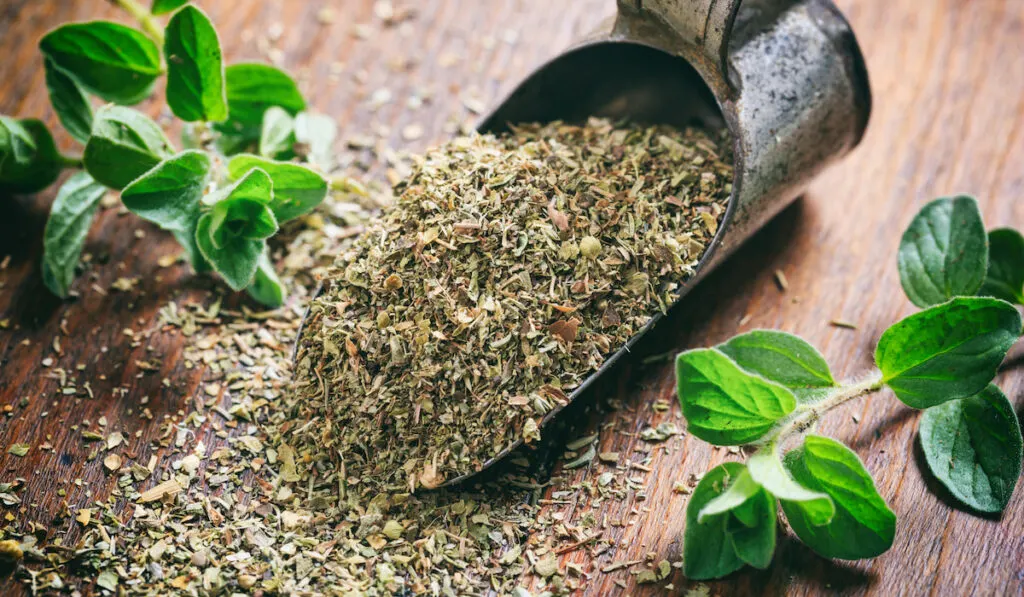
Oregano means the ‘joy of the mountain’ in Greek. The herb is a popular ingredient in most Italian and Greek cuisines.
The herb does well whether in part shade or full sun. Being a tough plant means that the herb can thrive in the garden when planted in a pot or grounded cover.
Furthermore, the more you harvest oregano, the thicker and quicker it grows.
It also doesn’t need much water.
Oregano is used in its dried form in most Italian, Greek, Mexican, and Turkish cuisine. Common types of dishes made using oregano include tomato sauces, vinaigrettes, pizza, or salads.
6. Thyme

Thyme is another classic versatile herb that you can use on almost everything. The herb performs well as a ground cover in the garden, but you can also plant it in a pot. You also need to plant it in a position that gets some shade during the day.
Recognizable by its pale green, small leaves, and strong aroma, thyme can be used throughout the cooking process.
Types of Thyme
- German Thyme- German thyme has a unique, robust flavor, and is commonly used in most cuisines. It’s also referred to as winter thyme due to its frost-friendly nature.
- French Thyme– French thyme has a mild and sweet flavor. It’s less hardy and grows to twelve inches.
- Lemon Thyme– Lemon thyme has a citrus scent and a lemony-like flavor. It’s used to flavor creamy sauces, poultry, fish dishes, and some desserts. The variety does well in most zones and can grow to 12 inches.
Some common thyme dishes include roasted potatoes, roasted vegetables, soups, pizzas, and fish dishes. You can also use thyme as a tea infusion or make sauces.
7. Sage
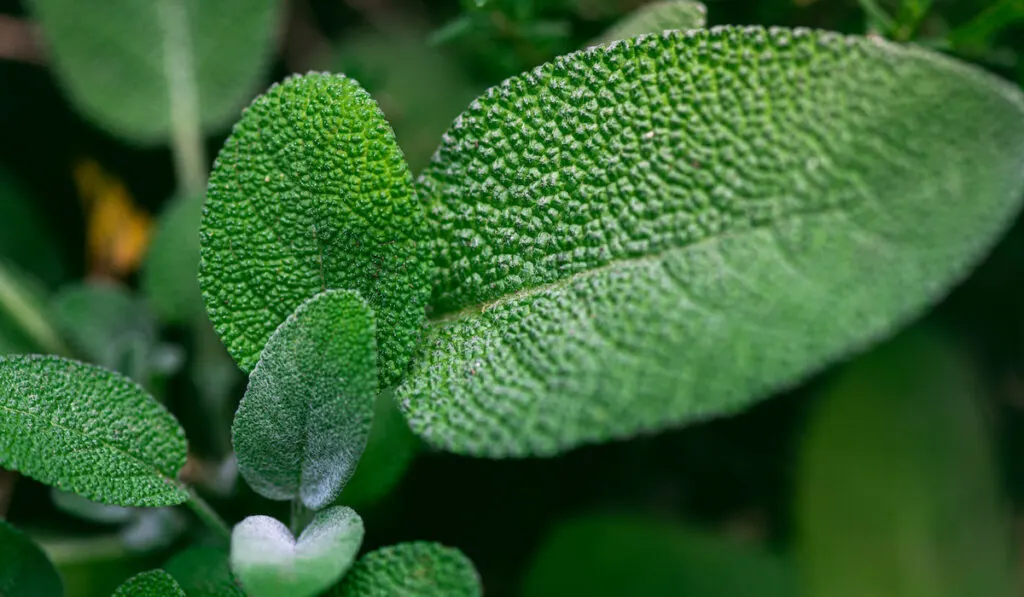
Sage is one of the earthy and savory-flavored herbs known for its gray-green leaves. It’s a common ingredient in Chinese herbal tea and you can use it in its dried or fresh form. Most people consider sage a sister of rosemary due to its woody flavor.
You can pair sage with heavy meat dishes, use it in savory bread, and some daily products like ravioli with sage cream sauce. The herb also works well in salads and soups. Sage can also be added at the beginning of your cooking process.
Apart from adding a unique flavor to dishes, sage also has medicinal benefits like relieving headaches, coughs, and hoarseness. Drinking an infusion of sage tea sweetened with honey delivers a laxative effect and stimulates menstrual flow.
8. Cilantro/Coriander
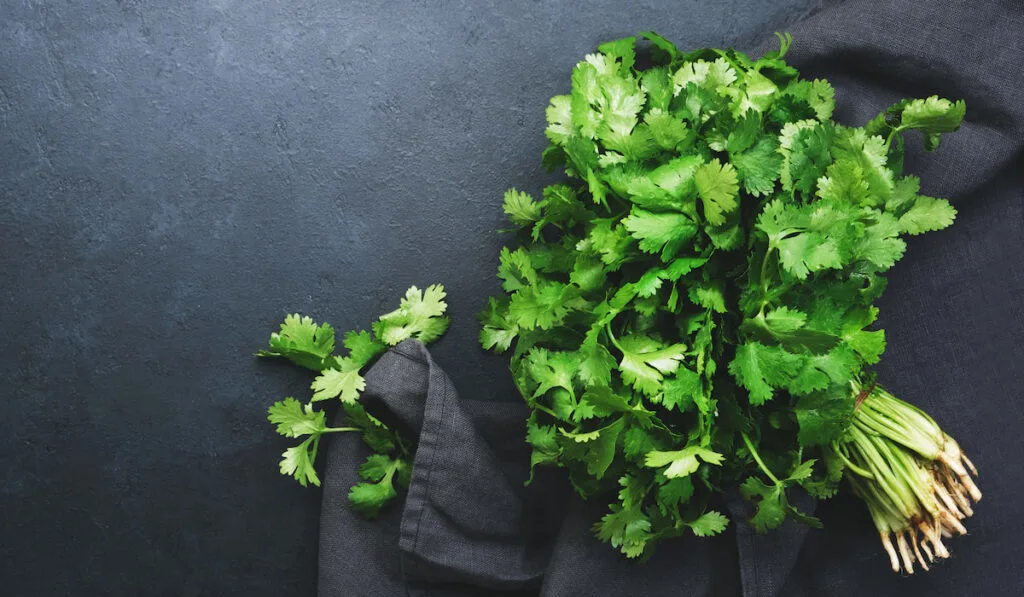
Cilantro closely resembles Italian parsley, but its leaves are thin and smaller. The herb also has a pungent aroma that’s zesty and fresh.
Five-leaved cilantro tends to run to seed fast and can be challenging to grow. Opt for broad-leaved cilantro as it produces more foliage and is easier to grow. Ensure that you water the plant and sow it frequently.
You can grow cilantro in a sunny spot in your garden. Ensure that you have fertile soil to promote growth.
Cilantro is a popular garnish for your pasta salads, rice dishes, soups, and more. It’s also fantastic when you want to add that extra flavor to your sandwiches and tacos. You’ll find cilantro in Middle Eastern and Mexican cuisine.
It’s also a common ingredient in Chinese and Spicy Thai dishes. You can use the cilantro plant’s seeds to make the ground spice coriander.
9. Tarragon
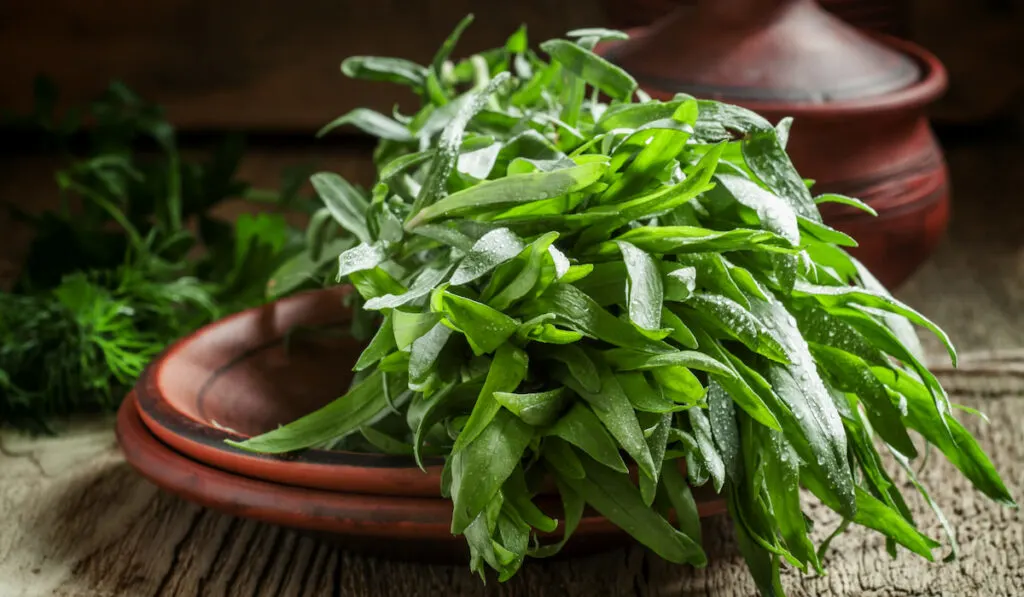
Another less-known herb that’s used in dried and fresh form is tarragon. Western Asia and Siberia native herbs are recognizable by their slender and long leaves.
Its anise flavor makes it similar to fennel, and it’s mostly used at the end of a dish as overcooking it can give it a bitter taste.
Types of Tarragon
- Russian Tarragon- Russsian tarragon has a less intense flavor compared to the French variety. It’s also coarse in texture, but easier to grow.
- French Tarragon- French tarragon has a pungent smell and licorice-like taste. It’s difficult to grow and is cultivated from cuttings.
Tarragon can be used as a garnish or added earlier on in creamy soups and mayonnaise-based dishes like chicken salads.
10. Chives
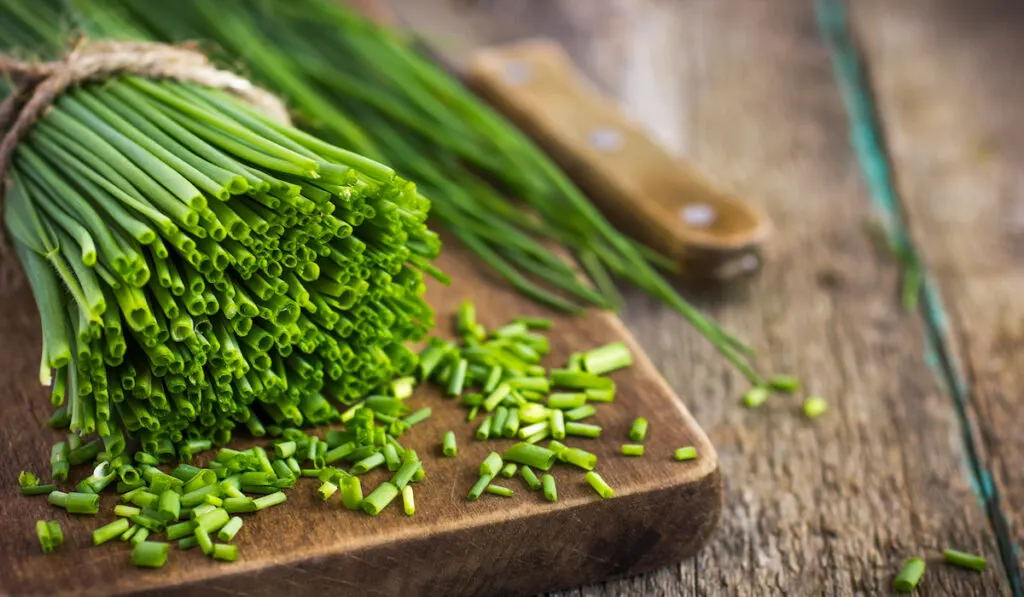
Chives have a bright green color and a mild onion flavor that pairs well with salads and summer dips. You can grow chives in pots on your kitchen windowsill or a sunny patio.
Although chives are considered tough, they perform better in cool weather and well-drained soil. Chives are mostly used in Asian dishes due to their oniony flavor with a hint of garlic.
You can also use chives in your tangy sour cream-based dip or as an addition to a cream cheese mixture. The herb also works perfectly as a garnish.
11. Marjoram
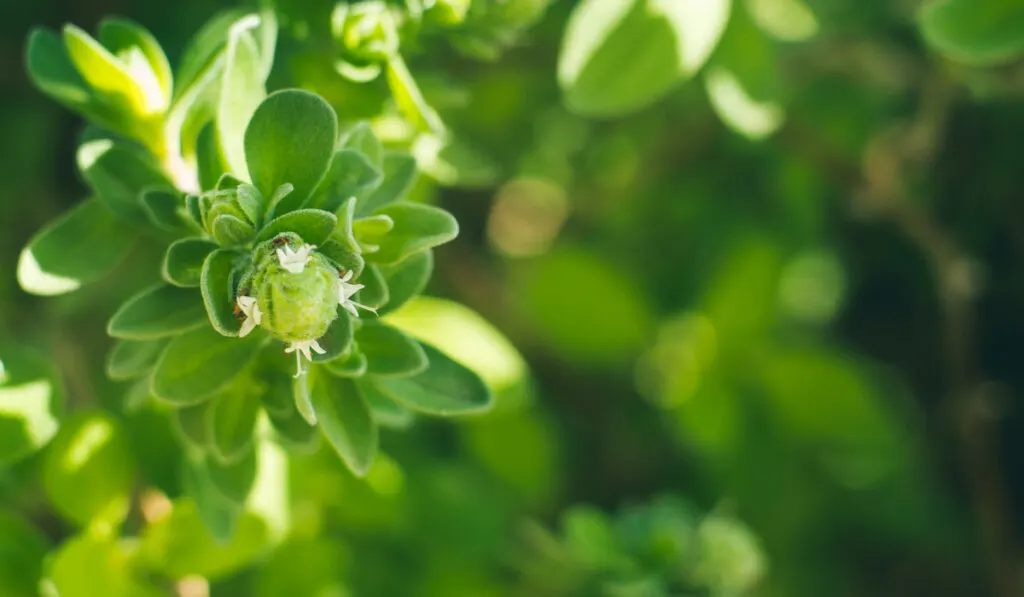
Marjoram is a cousin of oregano and shares some similarities like lemony, grassy leaves. It has oval-shaped and flat leaves.
However, marjoram has a mild and delicate flavor that’s slightly sweet. Although it’s a bit spicy, it’s kind of warm. The aromatic herb has notes of citrus and pine.
Marjoram can be used in dried and fresh form. Note that marjoram works well at the end of the cooking process, and you should avoid extensive heating.
The herb is popular in French, Turkish, and Cypriot cooking. Marjoram is also combined with oregano and thyme in Mexican cuisine.
12. Dill
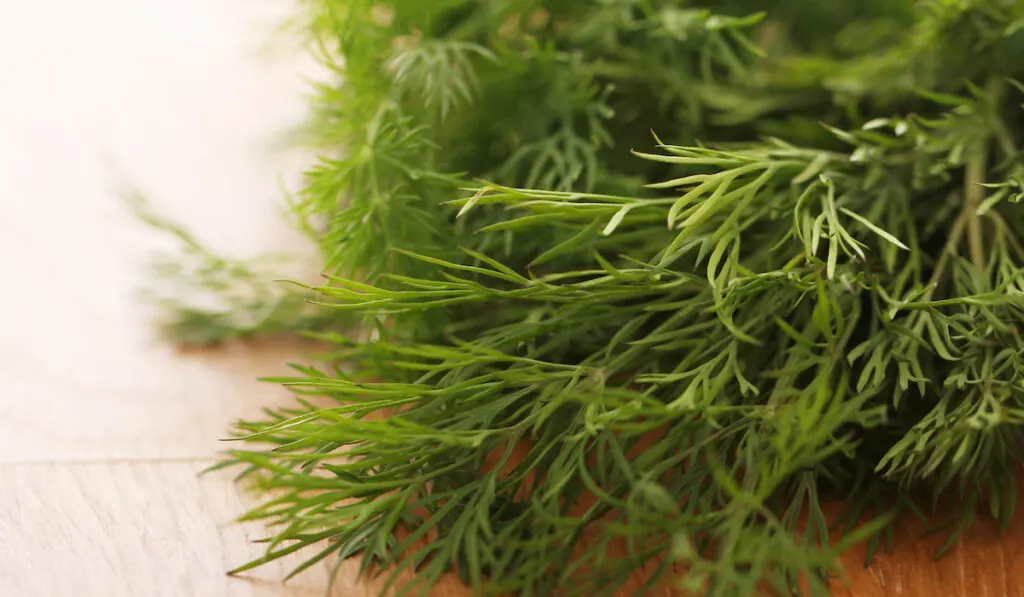
Dill is one of the simplest herbs to grow, known for its pungent aroma.
Back in ancient Roman times, dill was used as a symbol of vitality and was used to protect against witches.
You can use dill to add a sharp, yet fresh flavor to your omelets, potato salads, cold soups, cucumber dishes, cottage cheese, gravlax, and more.
Types of Medicinal Herbs
Some of the common types of medicinal herbs include:
Gingko
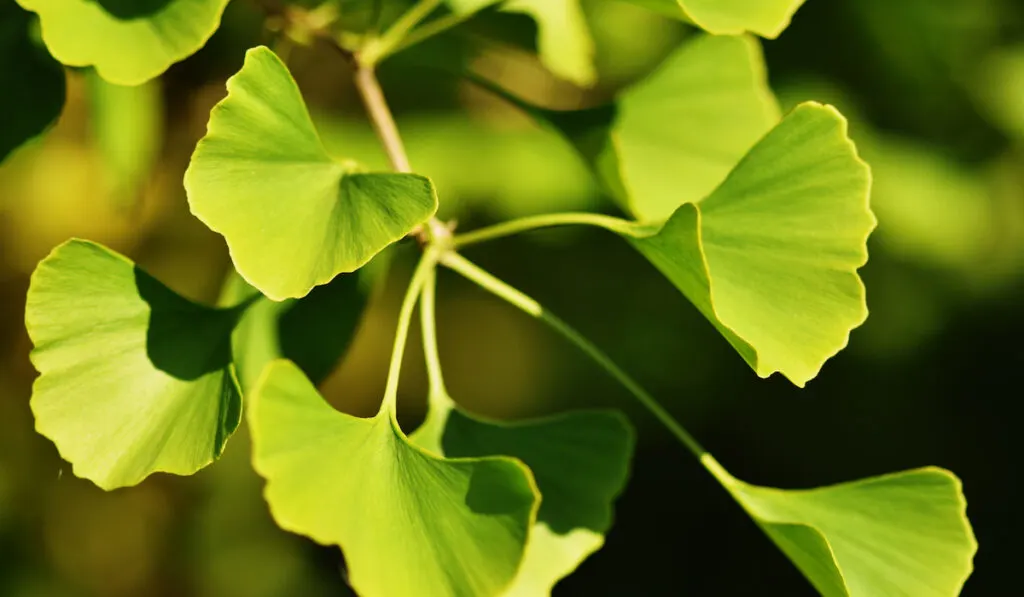
Gingko leaf extract is used to treat conditions like bronchitis, fatigue, asthma, and tinnitus. It’s also used to prevent brain disorders like dementia and improve memory.
Note that Gingko shouldn’t be used with anticoagulants, anti-inflammatory medicines, or tricyclic antidepressants.
Chamomile
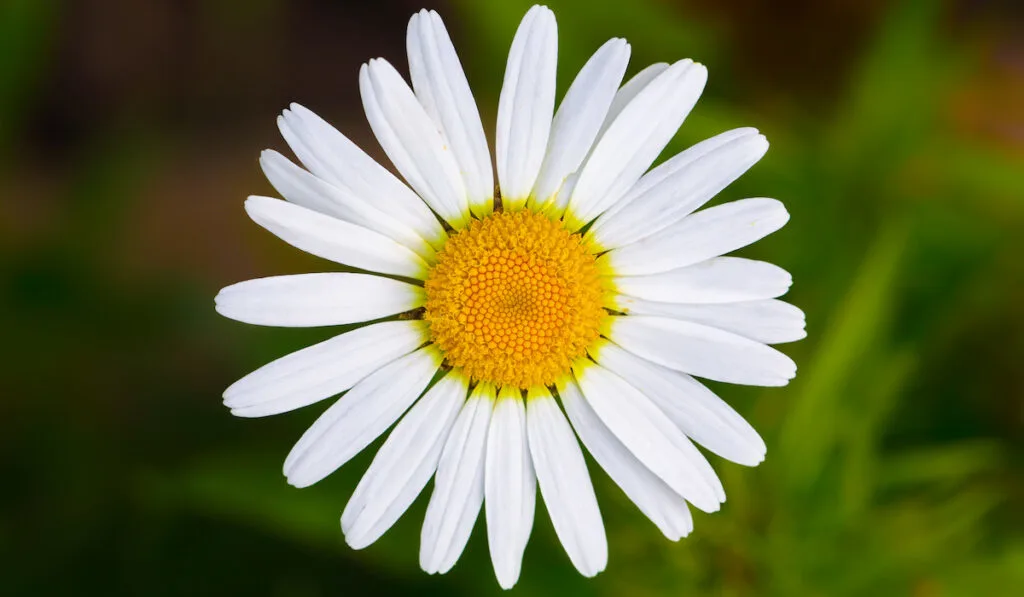
Chamomile is used for relaxation and anxiety. It’s also used as anti-inflammation and for wound healing in Europe.
Chamomile tea is a popular relaxation beverage. It’s also used as a compress in certain parts of the world. Topical chamomile can also be used to treat skin irritation.
Valerian
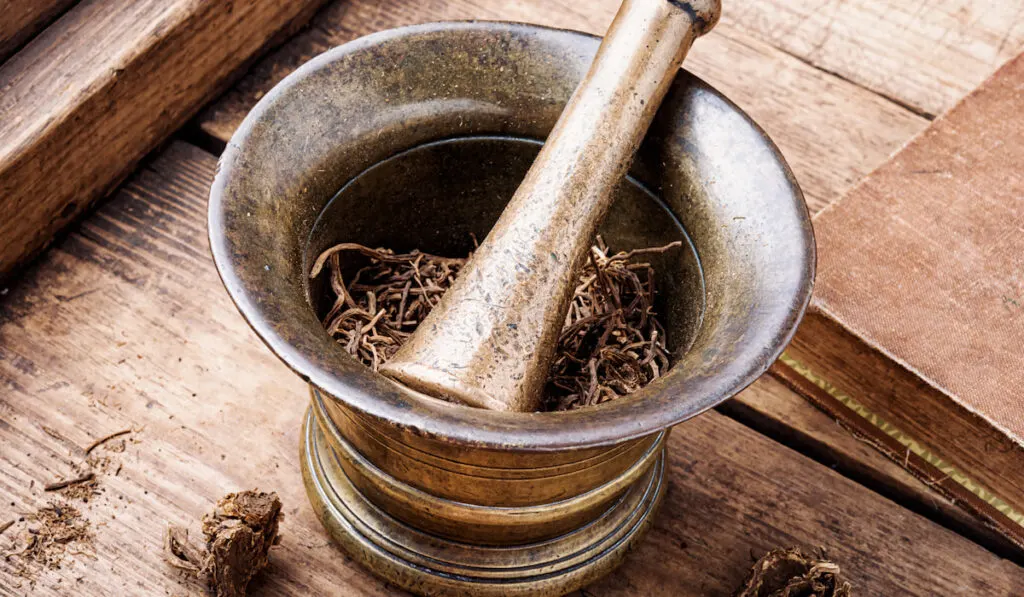
Valerian is a useful sleep aid commonly used to reduce anxiety and treat sleepiness. It’s also used as a flavoring in different foods.
Ginseng
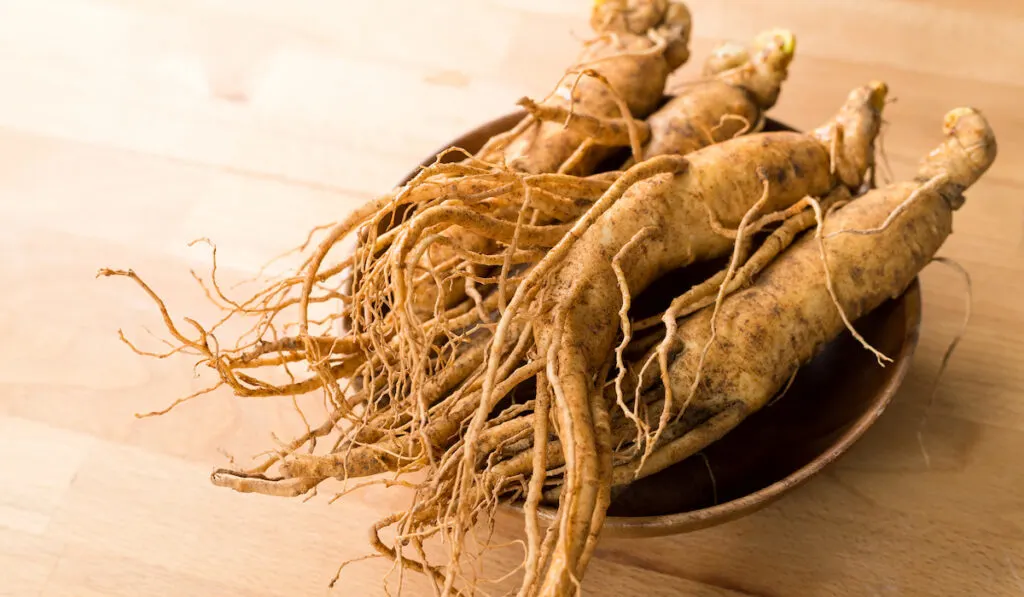
Ginseng is considered safe by the FDA and is used as an aphrodisiac and tonic. However, this herb should not be used with heparin, warfarin, corticosteroids, and nonsteroidal anti-inflammatory medicines.
Saw Palmetto
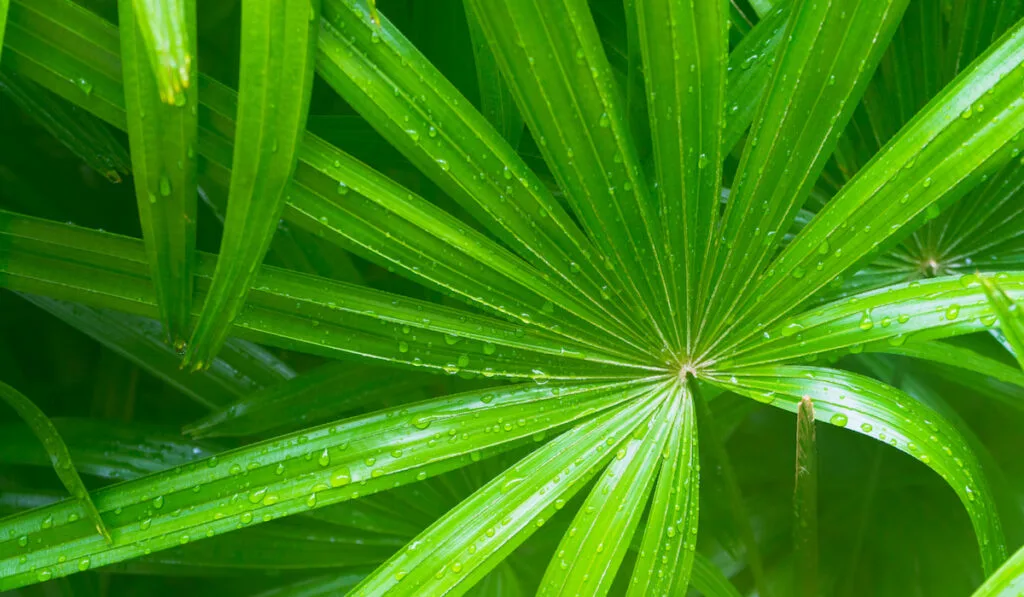
Saw Palmetto is effective in treating benign prostatic hypertrophy. Although the herb works, it has mild side effects like headaches and digestive upset.
Final Thoughts
Both medicinal and culinary herbs play an essential role in curing certain conditions and adding flavor to any dish. Hopefully, you now understand some uses of the different types of herbs.
Ensure that you are careful not to overdo the herbs as a few are extremely pungent and flavorful.
